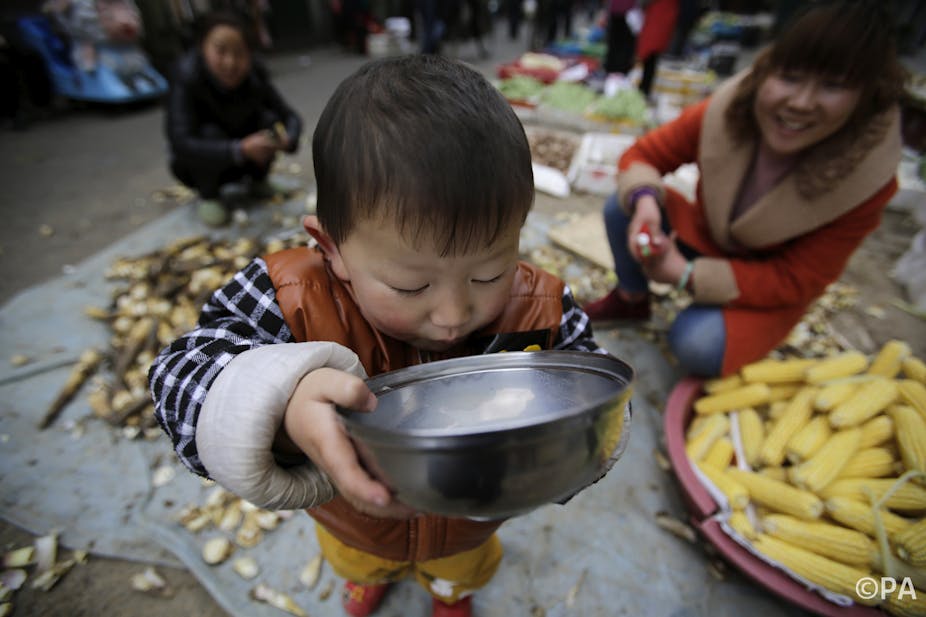China’s rapid economic growth, and the development of Shanghai, Chongqing, and Shenzen into modern metropolises, might easily give observers the sense of a successful country, full of confidence. Clearly that is what President Xi Jinping wished to convey in presenting what one senior banker described as “the most comprehensive and ambitious reform plan in the history of the People’s Republic”.
But in fact these perceptions are wrong. China is on the edge of a major crisis, and the reforms announced are in fact quite modest and will be unable to deal with the most pressing needs for change.
China’s rapid growth from 1980 to 2010 was built on a convergence of several factors: a big increase in the working-age population fuelled by pro-birth policies in the Mao years; a rapid increase in productivity through foreign investment and farmers moving to urban and factory work; cheap raw materials and labour; and a booming market for exports from the world’s rich economies. All of these factors are now going or gone.
Before 2000, China was self-sufficient in oil; now it is the world’s largest importer, and oil isn’t getting any cheaper. Labour costs have grown while surplus labour has shrunk, as three decades of the one-child policy means China’s working age population will likely fall by 20% in the next 40 years, and by a further 20% from 2050 to 2100.
Since 2008, the rich countries that buy Chinese exports have seen minimal economic growth, if any. China thus has sustained its expansion only by using state funds to boost the economy with construction projects and by using state-guided banks to flood the economy with credit. Meanwhile, private consumption has lagged, university graduates cannot find jobs in what remains basically a blue-collar manufacturing and construction-based economy, and the environment has been degraded beyond tolerance by the strategy of “build, build, build”.
There is only one way to prevent the coming serious growth crunch – and that is to shift China from a construction-based economy to one based on innovation and white-collar work. But that cannot happen if the government continues to restrict personal freedom and to control the population and economy from above.
The communique announcing Xi’s reforms, however, stated that the party “must consolidate Marxism’s leading position in the ideological sphere”, and “strengthen public opinion guidance” – hardly a recipe for greater personal freedom. There were no really bold reforms, such as extending voting for local officials to the county level, or creating independent courts to pursue corruption, or dropping internet censorship. Rather, Xi’s proposals consist of tweaks of existing policies that are designed to be eye-catching and sound impressive but that in fact reinforce the party’s grip on Chinese life.
For example, much excitement greeted the relaxation of the one-child policy. But in fact, this reform only affects urban single children who marry a spouse with one sibling. Rural households, minorities, and urban single-children who married other singletons were already permitted to have two children. Since the one-child policy has been in force for decades, the number of these special unions of single children to spouses with siblings is modest.
What’s more, there is no indication that urban Chinese families really want to have more children. Let us say that Chinese women are now freed to have as many children as their counterparts in South Korea or Japan; in China fertility is 1.66 children per woman while in Japan it is 1.41 and in South Korea 1.32. In Hong Kong, where the one-child policy did not apply, fertility is just 1.11.
In any case, the cost of raising children and the lack of affordable space in urban China are two further constraints unaffected by this change. So even with a more relaxed one-child policy, it seems likely that Chinese fertility will continue to decline, converging with levels seen in other industrialising Asian nations.
Planned reforms to give farmers greater control of their land are promising. But without details, we do not know how this policy will be reconciled with the vital need of indebted local governments to continue to sell and develop rural land to generate income.
Market reforms suggest that more prices will be allowed to find their natural levels; but the major firms providing key goods and services will remain under state control, so will likely find their way around any price changes. Eliminating the gulags is long overdue, but will not fundamentally free intellectual life in China if house arrests, loss of jobs and internet censorship continue to impede free speech.
In short, despite the reforms, the party will still stifle all other political voices, still control the major firms and banks, and still limit migration to the major metropolitan areas. This is timid change; hardly the reform China truly needs to change course and resolve its crises.

